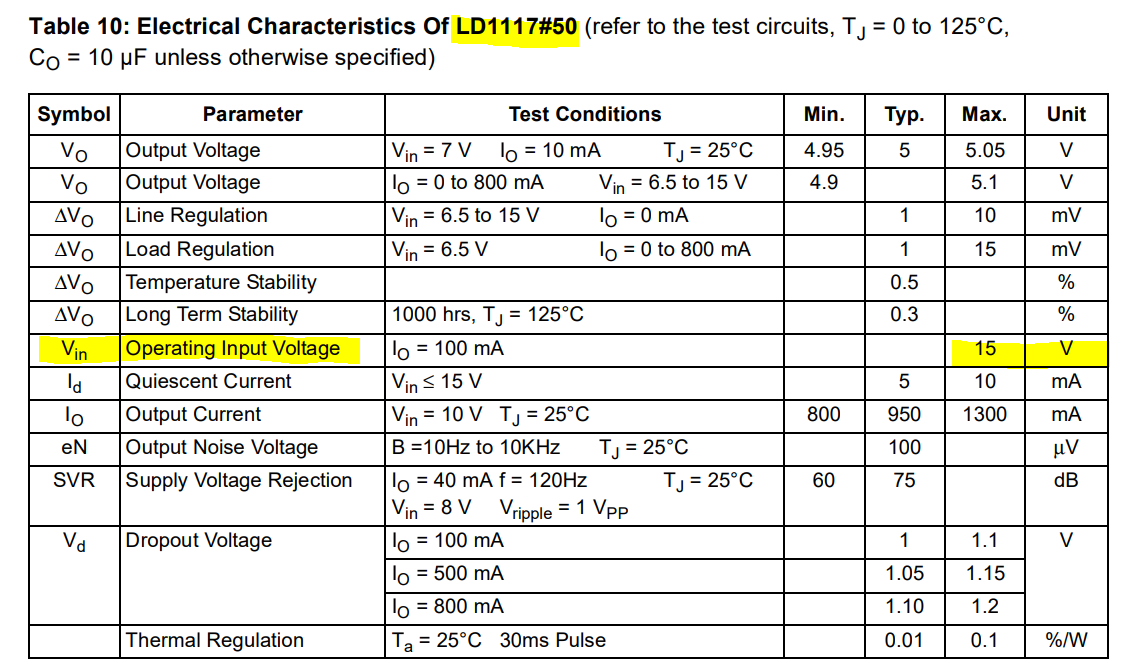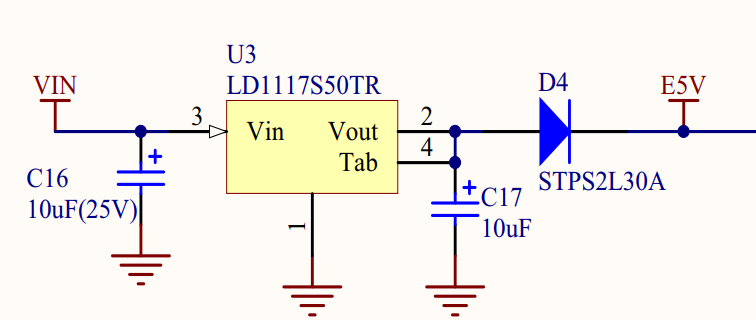I have the STM32's Nucleo-32(NUCLEO-F303K8) board with its data sheet here.
And according to the data sheet powering the board externally is possible up to 12V mentioned as follows:
But in the same document the schematic shows the following voltage regulator:
When I look into that regulator's datasheet here the electrical specs is given as:
Above the maximum input voltage is given as 15V.
My questions:
1. What could be the reason the Vin of the Nucleo-32 given as 7V-12V instead of 7V-15V?
2. In another Nucleo board's datasheet I saw the following:
In the above case there is a diode between the E5V and the regulator output. But in my board's datasheet there is no diode between E5V and the regulator:
What is the purpose of diode in the first one?





